|
|
|
Back to the main page, where single images can be viewed by clicking on thumbnails.
Diese Seite gibt es auch auf deutsch.
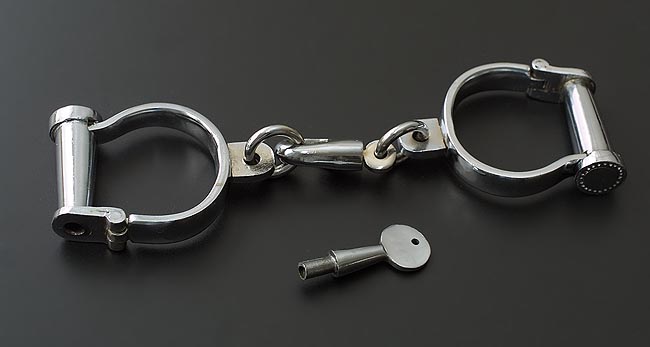
When I got these the lock was rusty and didn't move. But after one good oiling they still work fine.
They are quite roughly made, but strong and heavy, which I like. And they are chrome plated, which in my opinion is an advantage over the modern, nickel plated US Darbies, because nickel oxidizes by the time and gets lasting stains more easily. - One handcuff and the key are numbered.

The key must be screwed in to close and to open the handcuffs, which takes a little time. The size cannot be adjusted, but it fits on an acceptable range of medium and large wrist sizes.
This sort of handcuffs is really used professionally (often with a chain), as can be seen on Indian press photos.
The adjustable variant is also in use, see the photo of an arrested juggler.
Also Darby-style leg irons are used in India or Bangladesh (images no longer available).

These handcuffs by the German manufacturer Clejuso are all stainless steel, except the chain, which appears to be nickel plated copper. They are well made, and the swing through mechanism works smoothly.
Some years ago I saw these handcuffs quite often on the belts of German policemen. Now they mostly use a smaller, hinged model.
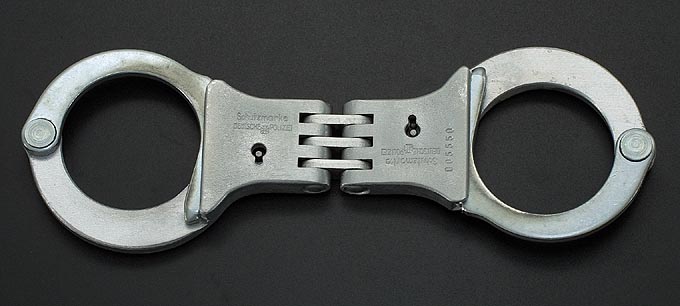
These handcuffs are numbered and marked "Schutzmarke Deutsche Polizei", meaning something like "® German Police". I guess they are replicas of pre-war models.
However, as far as I could see, the same model (perhaps with different branding) is still in use, they can be seen frequently on photos of prisoners on the way to court.
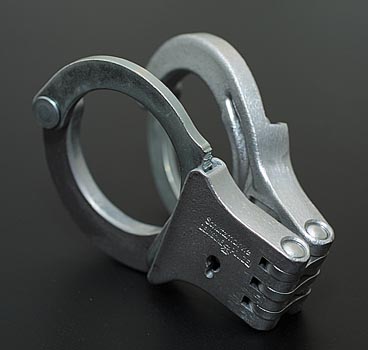
Once I saw these hanging from an officer's belt in court, the size making them a real eye-catcher!
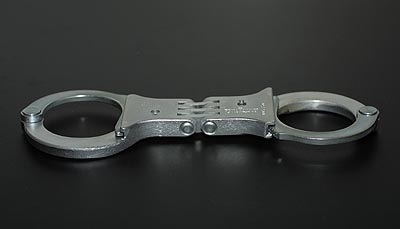
The thin moving parts are chrome plated steel, the rest is cast aluminium, which makes these handcuffs surprisingly light, despite their bulkyness. Because both cuffs are identical (instead of mirrored) there is always a narrow part on one wrist and a broad one on the other, which is less comfortable to wear than broad parts upside on both hands, especially when applied thightly.
Length and form of the hinge part may be intended for leading the prisoner by gripping the handcuffs there, but I have never seen this done.
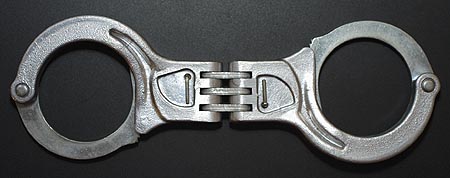
On the back side there are locks on each cuff.
When these handcuffs are applied with the keyholes towards the body, it is very difficult to to free oneself (but not impossible), even if one has the key.
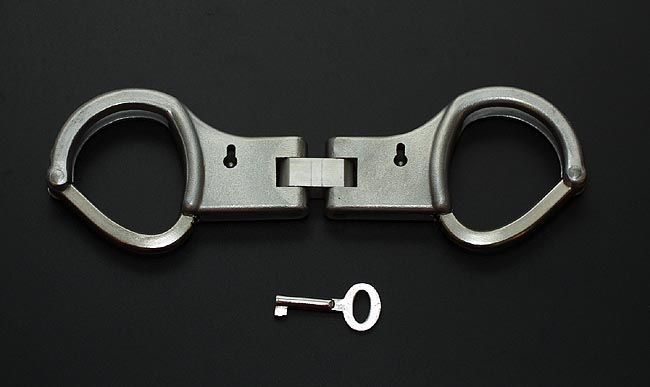
Heavy duty, not so heavy aluminum handcuffs (with nickel plated moving parts) from former East Germany. Also the key is solid and won't break off easily.
The swing-through mechanism is locked by a partly turn of key (making an an audible click when locked).
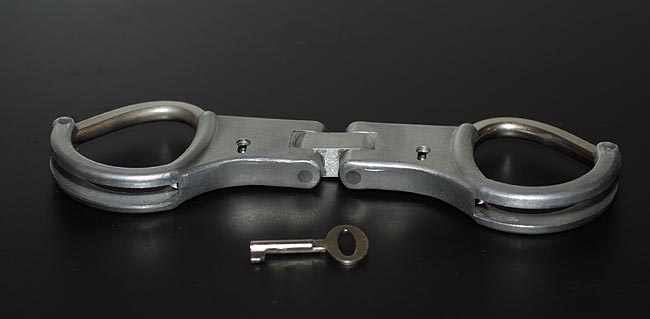
If these handcuffs are applied with the broad parts upside, the weight distributes well over the wist, but the wrists are forced to a slightly outwards-twisted position, which is uncomfortable. The intended position is with the moving parts upside.
This is the latest version of hinged East German handcuffs, improved to fit more securely also on smaller wrists.
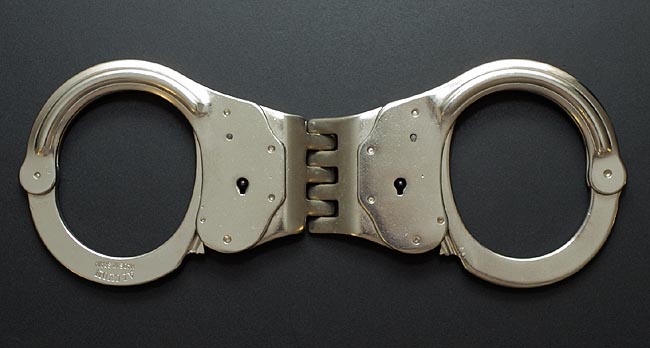
I have seen these handcuffs in use by the Spanish police. They are all nickel plated steel. Locking is done with the top of the key in a small hole on the narrow side.
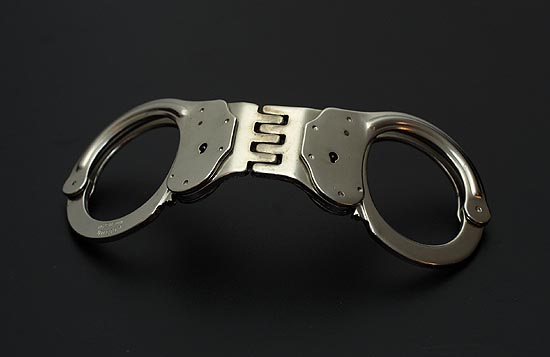
The hinge is short and rigid, which keeps the hands close together and rather immovable. But since they fit well on the wrist, these handcuffs are rather comfortable to wear when applied not too tightly and hands kept quiet.
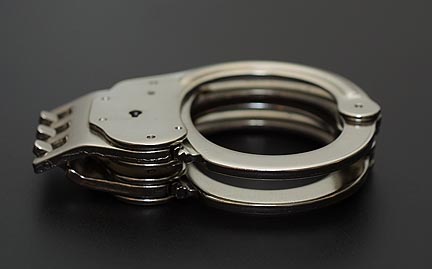
They can be folded and worn on the belt.
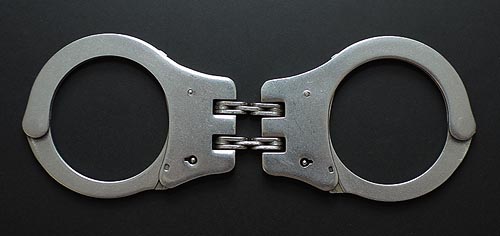
All stainless steel. The flexible hinge allows a freer wrist position than the rigid Alcyon.
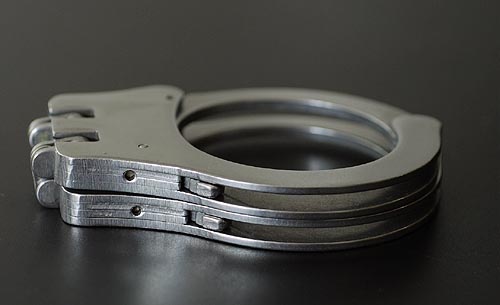
Locking mechanism on top side.
Back to the main page, where single images can be viewed by clicking on thumbnails.
Diese Seite gibt es auch auf deutsch.
